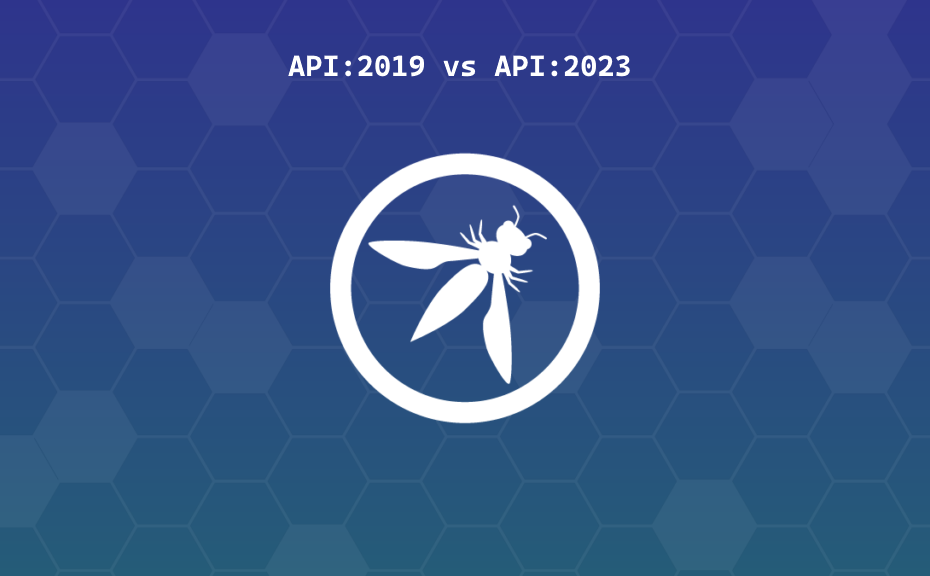In today’s interconnected digital landscape, APIs (Application Programming Interfaces) have become the backbone of modern software development. APIs enable communication and data exchange between various systems, facilitating the seamless integration of applications. However, with the increasing reliance on APIs, ensuring their security has become a paramount concern. In this blog post, we will compare the key aspects of OWASP API Security 2019 and OWASP API Security 2023, highlighting the advancements and changes that have taken place over the years.

OWASP API Security 2019:
OWASP (Open Web Application Security Project) is a nonprofit organization dedicated to improving software security. In 2019, OWASP released its first version of the API Security Top 10, which aimed to provide guidance and awareness on the most critical security risks specific to APIs. Let’s look at the key points covered in the 2019 edition:
- Broken Object Level Authorization: This category addressed the lack of proper access controls and authorization mechanisms, emphasizing the importance of implementing fine-grained access control policies to prevent unauthorized access to resources.
- Excessive Data Exposure: This category highlighted the risks associated with overexposing sensitive data through APIs. It emphasized the need for data minimization, where only the necessary information should be exposed to limit the impact of potential breaches.
- Lack of Resources and Rate Limiting: APIs often face the risk of abuse and denial-of-service attacks. OWASP API Security 2019 stressed the importance of implementing resource and rate limiting techniques to protect against such attacks and ensure fair usage of API resources.
- Broken Function Level Authorization: This category focused on the vulnerabilities arising from inadequate authorization checks at the function or endpoint level. It urged developers to implement strong authorization mechanisms throughout the API surface to prevent unauthorized access to sensitive operations.
OWASP API Security 2023:
As technology continues to evolve, so does the threat landscape. OWASP API Security 2023 builds upon the foundation laid by its predecessor and incorporates new trends and challenges in API security. Here are some notable updates in the 2023 edition:
- API Identity and Access Management (IAM): The 2023 edition emphasizes the importance of implementing robust IAM controls for APIs. This includes the use of authentication protocols like OAuth 2.0 and OpenID Connect to secure API access, manage user identities, and enforce fine-grained authorization policies.
- API Encryption and Data Integrity: The protection of data in transit and at rest is a critical aspect of API security. OWASP API Security 2023 encourages the use of industry-standard encryption algorithms and protocols to safeguard sensitive data exchanged between clients and APIs. Additionally, it stresses the need for data integrity checks to prevent tampering and unauthorized modifications.
- API Security Testing: The updated version recognizes the significance of regular security testing for APIs. It advises developers to incorporate automated security testing into their CI/CD pipelines, ensuring that vulnerabilities and weaknesses are identified and addressed throughout the software development lifecycle.
- Secure DevOps for APIs: OWASP API Security 2023 promotes the adoption of Secure DevOps practices specific to APIs. This involves integrating security into every phase of the development process, employing tools for vulnerability scanning, code analysis, and incorporating security requirements into API documentation.
Conclusion:
The evolution of OWASP API Security from 2019 to 2023 reflects the dynamic nature of the API security landscape. While the fundamental principles of securing APIs remain consistent, the 2023 edition addresses new challenges and advancements in the field. It places a stronger emphasis on identity and access management, encryption, security testing, and the integration of security practices into the development process. By staying up to date with the latest guidelines and best practices provided by OWASP, organizations can enhance the security posture of their APIs and mitigate potential risks effectively.
Citations:
https://owasp.org/API-Security/editions/2019/en/0x00-header/
https://owasp.org/API-Security/editions/2023/en/0x11-t10/
For further clarifications or support, please write to contact@paradigmitcyber.com

